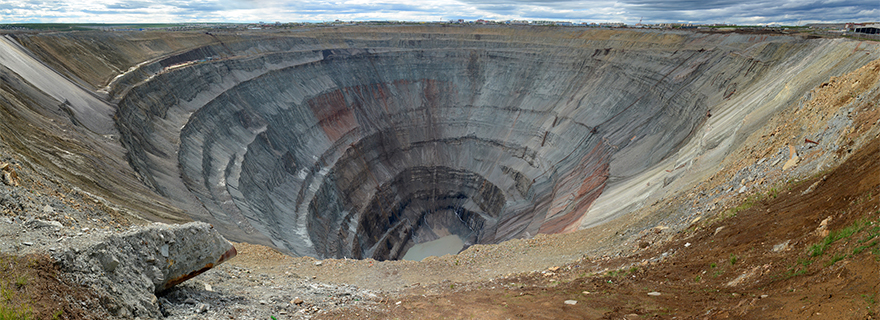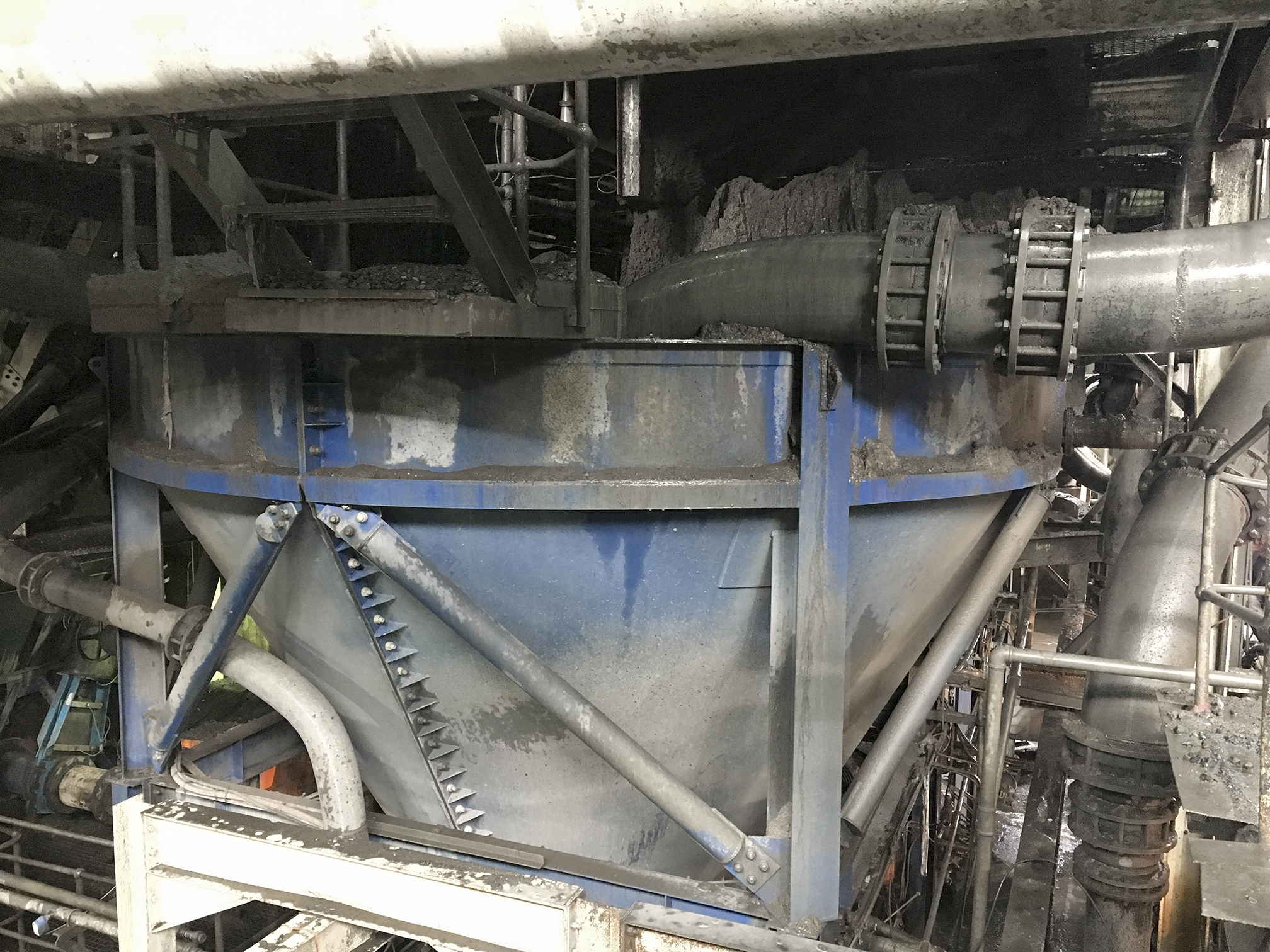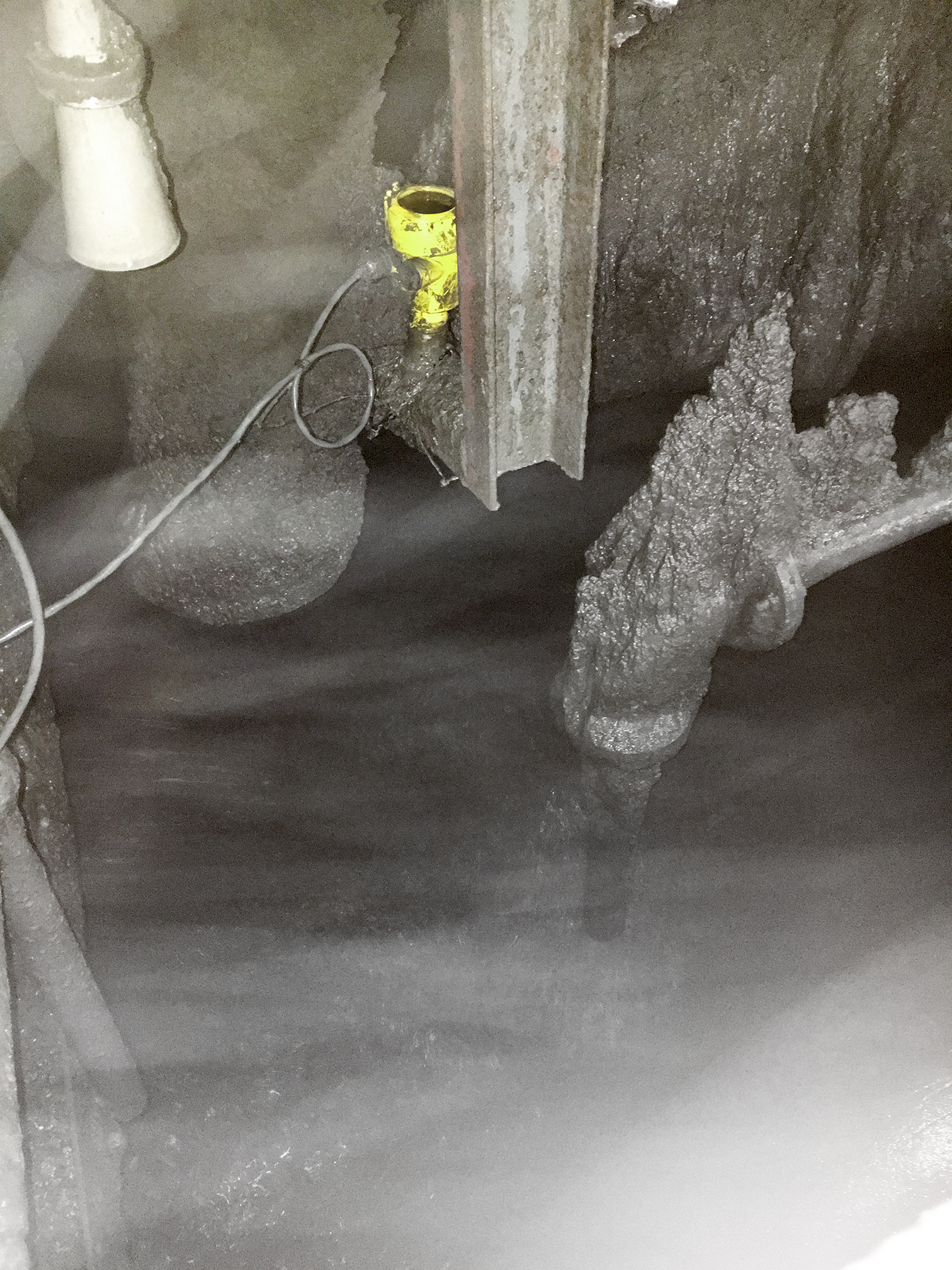In the Maluti Mountains in the Kingdom of Lesotho, in southern Africa, there is located the highest diamond mine in the world at 3,200 meters above sea level. The environmental conditions are correspondingly rough – abundant snowfall, temperatures that fluctuate between -18° C and +20° C and strong winds are part of everyday life. The conditions in the ore preparation process are also pretty rough. The mine transports the ore to the surface through two kimberlite pipes. The source rock is crushed and further processed to extract diamonds. The two pipes in the Lesotho mine contain only a very small proportion of diamonds. Their yield is less than two carats per hundred tons of rock. A huge effort is required to get these diamonds.
Separating diamonds from kimberlite
In a DMS (Dense Media Separation) plant, ferrosilicon in powdered form is suspended in water to obtain a fluid with the density of diamond. To this is added the previously crushed diamond bearing material, in order to separate the heavier minerals from the lighter rock. The DMS process produces a concentrate which generally amounts to less than one percent of the original material fed into the plant at the beginning of the process.
An alternative processing method is centrifugation, where the denser material is swirled at low and high speeds in cyclones. In the process, the diamonds and other dense minerals are pressed to the walls and then out the bottom of the cyclone. The waste water rises at the centre of the cyclone and is sucked out and screened to remove the remaining particles.
Both methods have their advantages and disadvantages. The investment costs for a DMS plant are ten times higher than for a cyclone. The DMS plant, however, provides better yields. The water consumption and operating costs for a DMS plant are also significantly higher than is the case with centrifuge processing. Of course the efficiency of a plant also depends on the skill of the operator and the applied technology. Decisive factors for the smooth operation of a DMS plant and, ultimately, the whole process, are, among other things, a high level of automation and measurement technology that delivers reliable measured values.
VEGA Messtechnik AG, Barzloostr. 2, 8330 PFÄFFIKON ZH
info.ch@vega.com ·
+41 44 952 40 00



